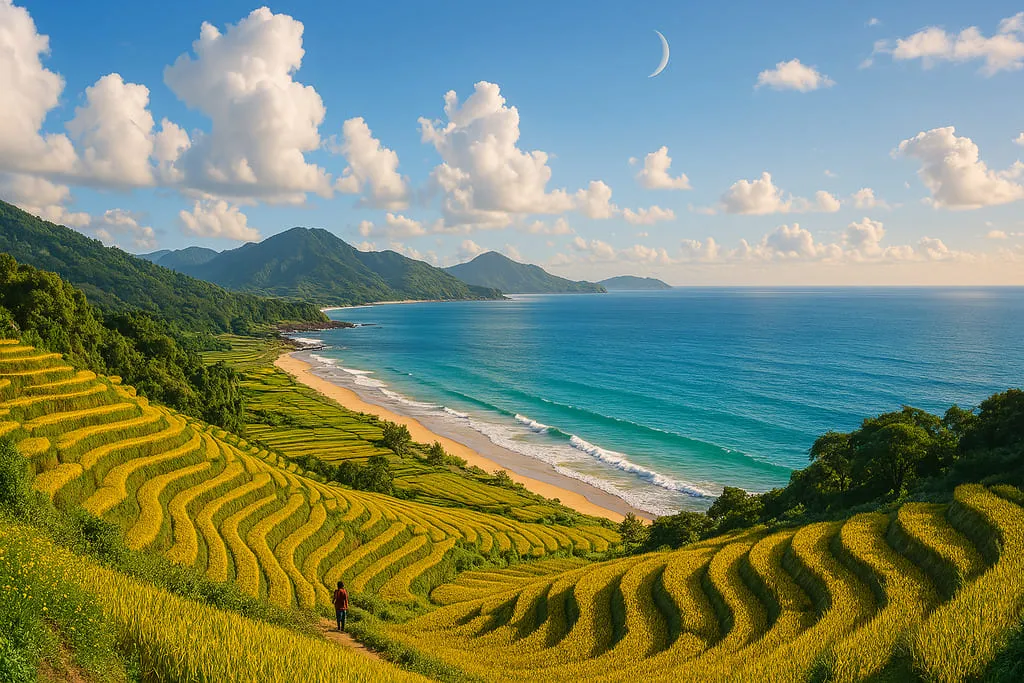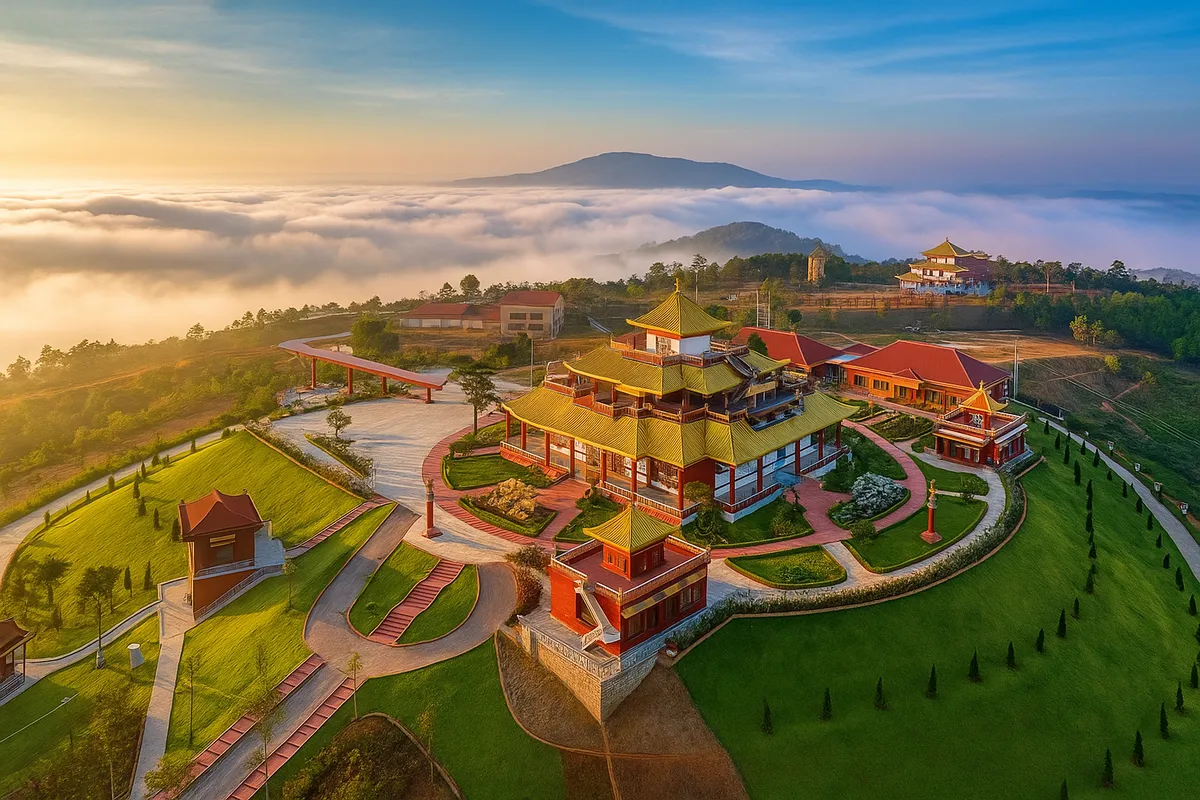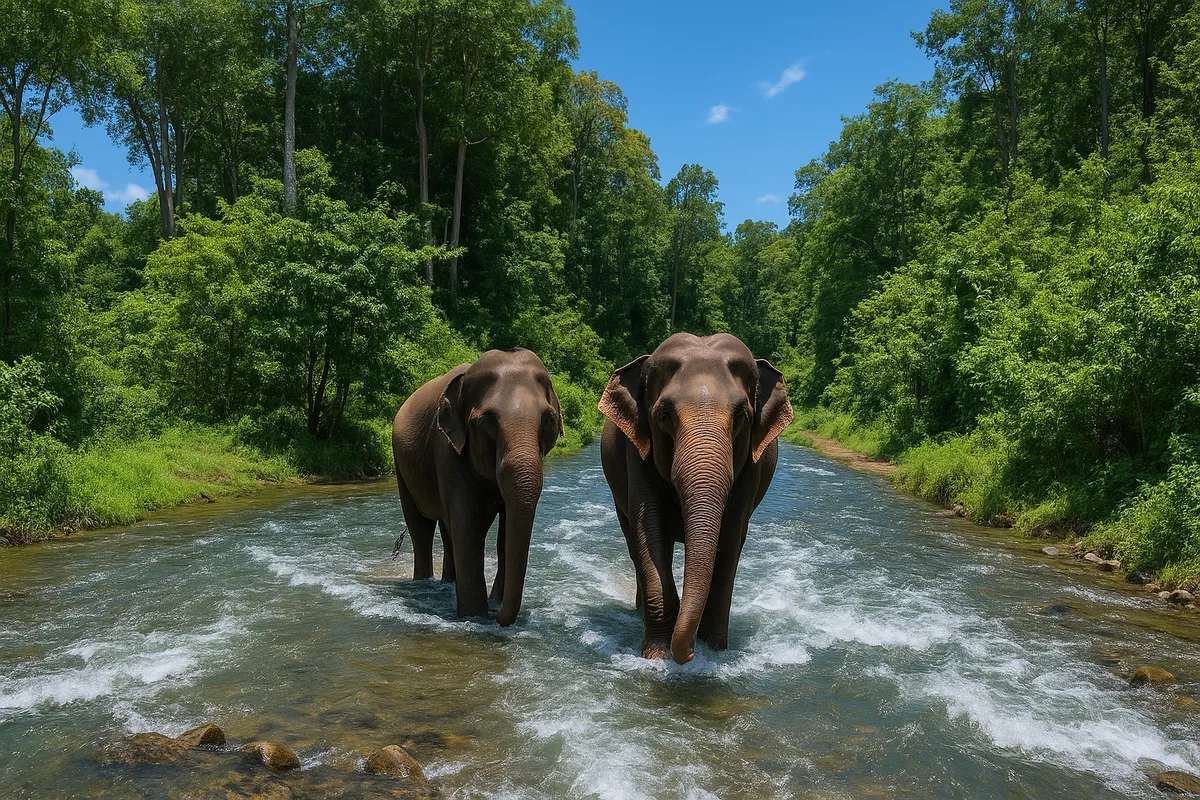Cai Beo fishing village, peaceful beauty in the middle of Lan Ha Bay
- Monday, Jun 02, 2025, 21:35 (GMT+7)
Cai Beo fishing village, peaceful beauty in the middle of Lan Ha Bay
Cai Beo fishing village leans quietly into the heart of Lan Ha Bay like a nameless cloud drifting for thousands of years without ever being forgotten. Floating houses rest on the surface of the water, small boats glide silently beneath towering limestone cliffs that resemble ancient fortresses. Together, they weave a landscape that is both serene and poetic. From the very first glance, it becomes clear that this place is unlike anywhere else.
In a world driven by haste, Cai Beo still follows the unhurried rhythm of an ancient fishing village. In the early morning, paddles gently tap the quiet water, the briny scent of seawater mingles with a light mist, and fishermen call out to one another from their fish cages to welcome a new day. Children perch on narrow wooden walkways, casting fishing lines into green moss-colored water. Sunlight filters through wooden slats, casting golden streaks across the sun-worn faces of fishermen whose hands are skilled with nets and fish. It is a world that moves on its own, simple and resilient like the ocean that surrounds it.
Few know that Cai Beo is more than just a fishing village. It is one of the oldest cradles of Vietnamese maritime culture. Shells, pottery fragments, and stone tools unearthed here tell a silent story of human presence dating back more than seven thousand years. Since the Neolithic era, people here have known how to weave fishing nets, build boats, catch fish, and live in harmony with the sea. The layers of sediment beneath the bay hold the memory of time, pages of a history that cannot be fully written in words.
Legends say that these waters once welcomed naval fleets during the Ly and Tran dynasties as they patrolled the coastal islands. Some believe a naval commander once built a watch post here, choosing this calm bay as a safe place to anchor before heading into open waters. Those traces now fade into the mist, leaving behind only weathered cliffs and humble homes drying fishing nets in the evening light, telling their stories with each rising and falling tide.
What makes Cai Beo special is not just its long history but also the way it gently touches all the senses. The space here feels open like an outstretched hand embracing the wind. Small boats drift like fallen leaves on deep blue water. Above them are soft white clouds and beneath them are coral reefs where groupers and snappers swim freely. Modest wooden homes and fish cages are tied close together, like the heartbeat of a coastal community. Even when apart, they remain in harmony.
There are no streets in Cai Beo, no cars or motorbikes, only water and boats. To move from one house to another, people row or push with a long pole. Even the daily journey to school for children becomes a trip across the water. Every voice, every call echoes across the bay, like the sea calling out the name of an ancient village.
When the sun sinks low on the horizon, the bay is bathed in a soft golden light. Reflections shimmer across the floating houses, casting shadows on the peaceful water like strokes on a giant oil painting. The view is breathtaking. Some have compared this place to an old version of Venice on the East Sea, but in truth, Cai Beo does not need to resemble anywhere else. Its beauty is deeply and uniquely Vietnamese.
The best time to visit Cai Beo is during the dry months from early spring to late autumn. When the sky is clear and the water reflects like a mirror, the village reveals its full charm. On calm days, the waves only ripple gently against the rocks. Visitors drift quietly past moss-covered limestone islets and fish farms, creating a journey without hurry where all emotions can settle and breathe.
From the center of Cat Ba town, just a few minutes by road will take you to Beo Wharf, the departure point for the trip to the village. Wooden boats, motorboats, and even kayaks can carry visitors along the water. Sitting on the boat, the cool sea breeze brushes against your face. The sound of waves against the hull and the familiar scent of salty wood feel like a cleansing of the soul. The sky, the water, and the spirit of the place open wide before your eyes.
If you are lucky, you may see fishermen pulling in their nets, catching groupers, or feeding their fish. The people here are humble and full of ocean soul. Their stories may be simple, but they are filled with the struggles and memories of life on the water. Some were born on the sea, raised on floating houses, and have never spent a day living on land. To them, Cai Beo is not just home. It is a part of their being.
The local food is a gift from the sea. Grilled catfish, steamed grouper, boiled crab, and fragrant dried squid are prepared in simple ways that preserve their full, rich flavor. The traditional fish sauce is thick and golden like honey. Just a small dip is enough to bring an entire meal to life. In this space, each meal becomes a ritual of connection with the ocean.
Not many people know that Cai Beo was one of the earliest marine archaeological sites in Vietnam, first studied by the French in 1938. After more than half a century in obscurity, it was officially recognized as a national heritage site in 2009, marking a new chapter in the preservation of Vietnam’s island and sea memory.
Among many famous destinations, Cai Beo does not shout for attention. It remains quiet like a deep note in the symphony of earth and sea. Only those who pause and listen can truly feel its wonder. Every house, every cliff, every ripple of water carries the soul of the past and whispers its name across time.
It is not by chance that someone once said, "Cai Beo is where time flows with the tide, not with the clock." That may be why those who come never want to leave. And even if they do, they carry with them a quiet space within their hearts where the salty breeze, the calm sunset, and the soft paddles at dawn remain forever.

 CHECKIN.VN
CHECKIN.VN








Share on